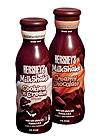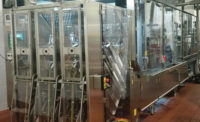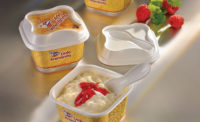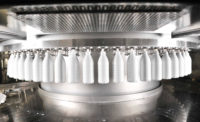
richmond3.jpg
Refrigeration and freezing are the norm for many dairy products because they provide protection from spoilage over the recommended shelf life of the products. Although not new, modified atmosphere (removal of oxygen and incorporation of nitrogen) has been used for chunk and shredded cheeses for more than 20 years. The critical issue here is to have excellent seals and the proper equipment to seal through excess material, especially zipper material. Without good seals, oxygen will enter the package and will create early mold.
Paper versus plastic for milk is another ongoing battle. Numerous research papers have provided data on the problem of light oxidation causing both off flavors and Vitamin A degradation. Some stores turn the lights out in the dairy case; some consumers purchase milk in paperboard cartons when available for enhanced protection; some dairies provide opaque plastic containers; but most just deal with the off flavor and vitamin degradation in HDPE plastic jugs.
There is reportedly some work going on at the university level where cottage cheese and sour cream are being treated with modified atmosphere (carbon dioxide addition) in the head space; achieving noticeable shelf-life improvement.
The most notable work (in the last decade) in shelf- life extension has been in single-serve flavored milk in plastic bottles. Using either extended shelf life (ESL) and/or aseptic packaging processors have increased the shelf life of these products up to six months. Moreover, aseptic packaging and shelf-life extension have afforded the supply chain significantly more flexibility in distribution/warehousing/logistics.
For those not familiar with ESL and aseptic, there is significant food science, processing, and packaging that are key in the safe delivery of these products. The following provides more insight into this integrated product/process/package system.
Among the ESL packaging systems offered today are Tetra Pak, Evergreen, and Elopak for gable-top paperboard cartons; Serac, Remy, Procomac, and Krones for PET bottles; and Scholle and Liquibox for bag-in-box for food service applications. Aseptic packaging system offerings for single-serve milk and milk products include Tetra Pak and SIGCombiBloc for paperboard-based structures and Stork and Shibuya for plastic bottles.
Because of the complexities of operation and regulatory restrictions, contract manufacturers are usually the best way to approach entering the business currently. Contract packagers for aseptic packaging include Gehl Guernsey, Gossner, Jasper Foods, Nordic. Steuben, and Parmalat, among others. ESL co-packers include HP Hood, Schroeder, Heritage Foods, West Farm Foods, and Steuben.

Consumer Confusion
Many products have inkjet or laser codes with dates that the consumer does not understand. One large manufacturer uses “sell by” dates, while another uses “best when used by” dating. Others use “guaranteed fresh until opened by date on front.” We even have “best when purchased by” and “use or freeze by” and the list goes on. Packaging for dairy products should provide and connote quality and safety, be easy-to-use and secure, and code date information should not just benefit the manufacturer and retailer, but should also help the consumer to understand the shelf life of the product for usage. While there are some state mandates on coding for milk, there is much consumer confusion in the marketplace.Packaging is key to dairy product shelf life from technology to communication. ESL and aseptic technology development has been a key driver in the growth of flavored milks, but there is more to be done. Active packaging is likely the next opportunity to provide packaging shelf-life improvement.
PTIS is a leading packaging consultancy that provides sustainable packaging workshops and strategy development. For more information, go to www.pti-solutions.com.


